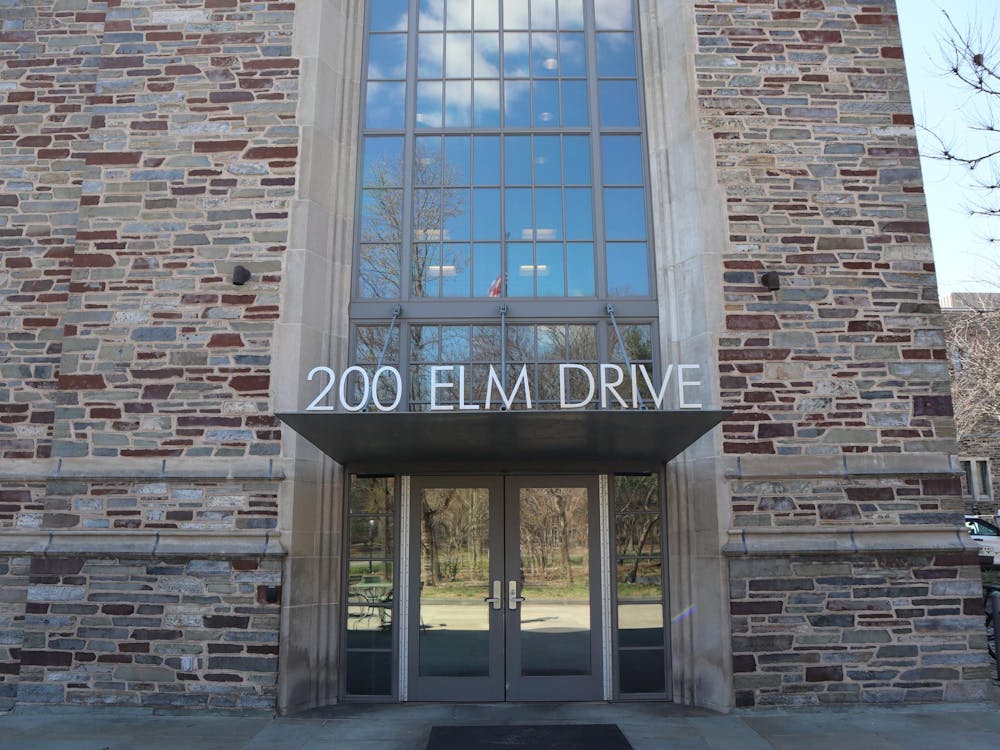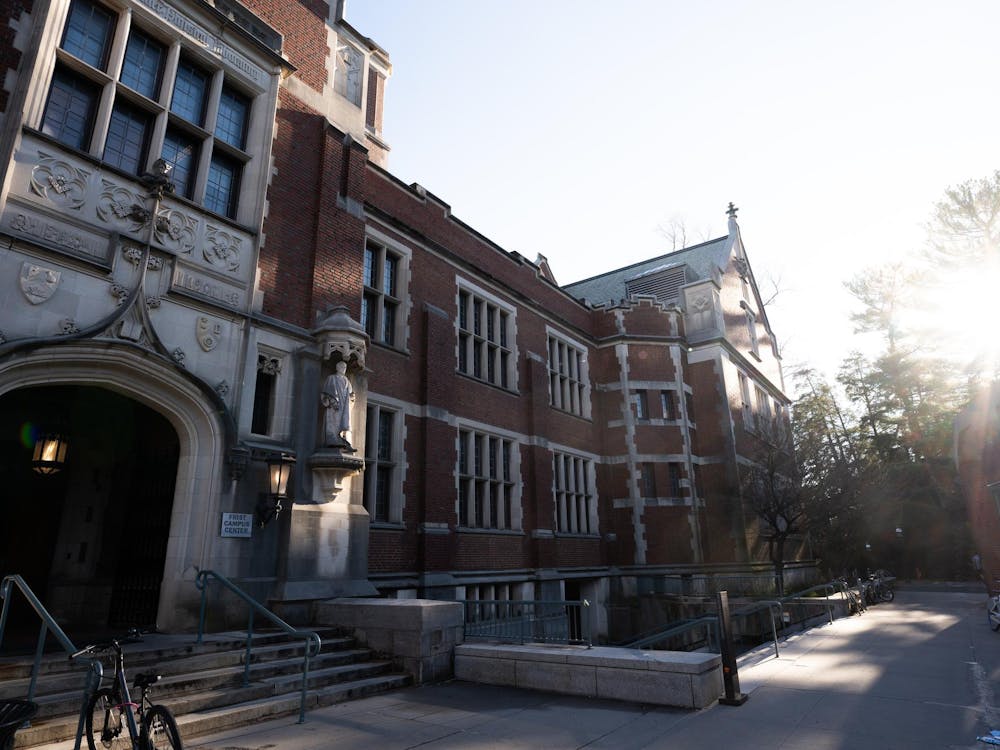University President Christopher Eisgruber '83 released a letter in response to an inquiryfrom several members of the U.S. Congress into the University’s endowment spending on Thursday.
Eisgruber did not respond to a request for comment.
The 11-page letter responds to 13 questions sent on Feb. 8 to 56 colleges and universities with endowments over $1 billion.
Eisgruber’s response notes that the University endowment was $22.7 billion as of June 30, 2015, with the primary invested pool having a market value of $22.3 billion. It is composed of permanently restricted net assets, temporarily restricted net assets and unrestricted net assets. Additionally, in fiscal year 2015, the total value of investments not included in the endowment was $558 million. The investment return on the endowment in fiscal year 2015 was 12.7 percent. The University spent $320 million in that fiscal year to manage the endowment through external and internal costs.
“Princeton’s endowment is made up of thousands of accounts, some of which date back literally hundreds of years,” Eisgruber wrote in his letter.
He added that most accounts are related to financial aid or additional educational programs such as research and teaching programs, library resources and faculty positions.
“It’s a pool of money that generates resources every year that supports the kind of teaching and research we use every year that affect the quality of the the education we can offer,” Robert Durkee '69, vice president and secretary of the University, said.
Additionally, Eisgruber wrote that the endowment covers half the cost of the University's operating budget and helps meet high priority capital needs.
Eisgruber noted in the letter that the University’s financial aid program is entirely grant-based and is considered very generous, as studentsgraduate with only around $6,000 in debt on average compared to national averages. In fiscal year 2015, 25.2 percent of the endowment payout was devoted to student aid,in 2013 is was 26.4% and in 2014 it was 25.1%.
In 2008, the U.S. Senate Finance Committee sent a similar bipartisan inquiry to 136 public and private colleges and universities for information regarding financial aid and endowment spending. The inquiry was sent as a response to greater congressional concern regarding endowment spending and rising college costs as a reauthorization of the Higher Education Act was presented in Congress.
According to a Feb. 2008 ‘Prince’ article,a witness who had testified before the Finance Committee had presented a proposal to require colleges and universities to spend a minimum percentage of their endowments to reduce education costs for their students.
“We really welcome the opportunity to answer the questions and shed some light on how endowments are used,” Durkee said. “We welcomed it eight years ago, and we welcome it this time.”

Eisgruber addressed the University’s response to Utah Senator Orrin Hatch, the chairman of the Senate Committee on Finance, Texas Congressman Kevin Brady, chair of the House Committee on Ways and Means and Illinois Congressman Peter Roskam, chair of the House Committee on Ways and Means Oversight Subcommittee.
“We appreciate the substantive and timely responses we have received from colleges and universities,” Lauren Aronson, spokeswoman for the Committee on House Ways and Means, wrote in a statement. “As we hear from more schools, we'll continue to learn about how they use their tax-exempt status and spend their endowments in light of rising tuition costs.”
According to Aronson, the Committee only requested the information from 56 institutions this year because of the higher endowment threshold of $1 billion. In 2008, the Committee requested information from136 colleges/universities because the endowment threshold was lower.
“The last time around, one of the lessons from the responses was that the universities with more substantial endowments are able to provide more generous financial aid and do,” Durkee said. “One of the starting questions was whether the universities should be encouraged or required to give more financial aid when they have more endowment resources, but the answer is that those are the universities that do provide more generous financial aid.”
Durkee said that the grant-based financial aid policy that the University and its peers have adopted is one example of the generous financial aid.
Eisgruber wrote in his response that students receiving Pell Grants increased from 7.2 percent in the Class of 2008 to 18 percent in the Class of 2018 in part due to the level of need-based aid the University could supply.
Durkee noted that an example of an educational practice that requires significant resources is the senior thesis, which was not mentioned in the response.
“It’s a very expensive educational practice to require every senior to write a thesis because of the faculty time involved and the research resources required; that’s a very expensive way of providing an undergraduate education, but it pays enormous dividends on undergraduate experience,” Durkee said. “We can do that because of the resources we have, and other places might like to do that, but they don’t have the financial capacity to do it.”
According to a previous ‘Prince’ article,Congressman Tom Reed was working towards legislation that specified how much universities with endowments above $1 billion should spend.
“The details of the proposal are still fluid because we are waiting on additional information from the Ways and Means Committee regarding endowment spending,” Reed's Communication Director Brandy Brown said.
Brown added that she can’t make accurate comparisons between 2008’s proposal and today’s proposal without those responses. Reed’s proposal currently suggests that endowments totaling over $1 billion have a 25 percent progressive payout in the form of grants to working-family students in order to cover the cost of attendance. Working families are defined as having income between 100 to 600 percent of the federal poverty line , currently $24,300 per year for a family of four. Institutions would be penalized with a loss of tax-exempt status if they are non-compliant for three years.
Durkee emphasized the resources endowments can provide.
“I think Congress doesn’t always focus on the fact that the earnings of these endowments are, in fact, what is allowing these universities to be among the best in the world," he said.
Durkee added that when surveys name the best universities in the world, most of the top schools are American universities with the most substantial endowments.
“That’s an important message,” he said.
According to Eisgruber's letter, the University determines what percentage to pay out of the endowment through the Board of Trustees' decisions, and the policies that govern this determination are reviewed on a regular basis. He wrote that these decisions are based on “intergenerational equity” which focuses on the “highest possible levels of quality and affordability for the current generation” and future generations, as well as planning for budget planning and stability.
From 1979 to 2009 the target range for the spend rate was4 to 5 percent, but effective July 1, 2015, the Trustees increased it to 6.2 percent, according to Eisgruber’s letter.
“This information will guide our efforts to reform our broken tax code and help ensure our policy decisions serve the best interests of students and families,” Aronson added.“We’ll continue to speak with university officials about the path forward.”
Aronson said there are no other details to announce at this time.
“One of the things that I hope comes through our response and other responses is that universities do use their endowments to support financial aid and also they do use them to support the full range of teaching and research programs,” Durkee said.
Many of the 56 colleges and universities are members of the Association of American Universities.
Barry Toiv, AAU's vice president for public affairs, said thatmember universities all intend to respond.
“As for the next steps, we will need to wait to see what the committee does with the responses,” he said..
In March, a proposed bill in Connecticut intended to create a tax for Yale University’s $25.6 billion endowment met a negative reaction from citizens, affiliates of Yale and other lawmakers, according to Durkee. Yale is also one of the 56 universities named in the congressional inquiry.








